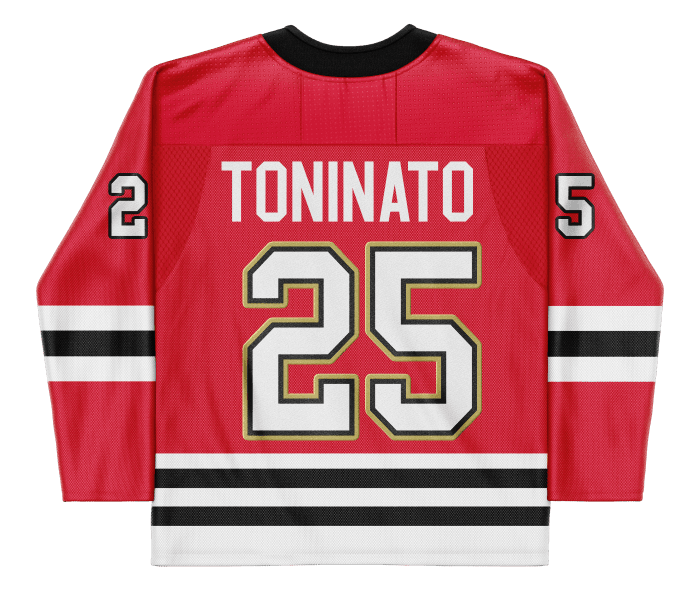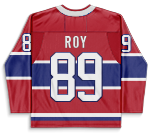
NHL Transactions & Roster Moves

Rempal was recalled to take the place of Paul Cotter (illness) in the lineup for Monday's game against the Wild. Rempal has two goals in four games with the Golden Knights this season.

With Vitek Vanecek battling an illness and lower-body injury, the Devils have recalled Akira Schmid from the Utica Comets of the AHL. Schmid started the season with the Devils but was demoted to the AHL after a poor start. The 23-year-old Schmid has struggled at the AHL level as well this season, posting a 3.58 GAA and .885 SV% in 12 games (3-5-4).

Willman has not played the last two games for the Devils, was placed on waivers and cleared, likely to make space to recall a netminder in response to Vitek Vanecek dealing with an injury. The 28-year-old Willman has two points (1G / 1A) in 13 games with the Devils this season.


Toninato has cleared waivers for the second time this season and will be reassigned to the Manitoba Moose of the AHL, a move designed to create space for David Gustafsson, who has been activated off IR. In 15 games this season, the 29-year-old Toninato has four points (1G / 4A) while averaging 10:11 time-on-ice.

Patera was recalled from the Henderson Silver Knights (AHL) on Monday as Logan Thompson is battling an illness and is unable to suit up. Patera has played five games with Vegas this season but has spent most of his time with Henderson, posting a 3.08 GAA and .903 SV% in 17 games (7-7-3).

With Carson Soucy (hand) being placed on IR, Vancouver recalled Woo from Abbotsford (AHL). Woo was the 37th overall pick of the Canucks in the 2018 NHL Entry Draft but has yet to play a game at the NHL level. The 23-year-old defender has 16 points (5G / 11A) in 42 games with Abbotsford.

Jankowski was recalled along with Egor Afanasyev on Monday in moves corresponding to Philip Tomasino being reassigned to the Milwaukee Admirals (AHL). The 29-year-old Jankowski has 324 NHL games under his belt but has spent the majority of the 2023-24 campaign with Milwaukee in the AHL, scoring an impressive 47 points (15G / 32A) in 42 games.

Afanasyev was recalled along with Mark Jankowski on Monday in moves corresponding to Philip Tomasino being reassigned to the Milwaukee Admirals (AHL). Afanasyev was the 45th overall pick of the Predators in the 2019 NHL Entry Draft and has been enjoying a terrific season at the AHL level, scoring 42 points (21G / 21A) in 42 games.

Tomasino has been reassigned to the Milwaukee Admirals of the AHL as Egor Afanasyev and Mark Jankowski were recalled in adjacent moves. Before scoring three points (2G / 1A) in his last three games, Tomasino was limited to only three points (1G / 2A) in his previous 12 and has failed to translate his pedigree from being Nashville's first-round pick in the 2019 NHL Entry Draft to the NHL level this season.



The Maple Leafs do not appear to have anyone noticeably injured so Beniot's recall may be due to precautionary reasons but nonetheless, he finds himself back up with the Maple Leafs after the All-Star break. The 25-year-old signed a one-year minimum contract in the offseason but has been useful for Toronto, with two points (1G/1A), 34 SOG, 33 PIMs and a +2 plus/minus through 35 games this season.

Condotta played the last three games for the Canadiens and was held without a point while firing four shots on goal. Condotta had 16 goals, 14 assists, 61 PIMs and a +1 plus/minus in 71 games with the Laval Rocket (AHL) last season. The 25-year-old joined the Canadiens as an undrafted free agent in 2021-22 after finishing school at UMass-Lowell (NCAA).

With Dan Vladar being placed on IR with a lower-body injury, the Flames have recalled Wolf from the Wranglers (AHL). Wolf has played five games with the Flames this season, but most of his heavy lifting has been done with the Wranglers, where he has been sensational this season, posting a 2.27 GAA and .927 SV% in 28 games (18-7-2).

Beckman went pointless in nine games with the Wild last season and is yet to play an NHL game in the 2023-24 season. The 22-year-old winger has nine goals and ten assists in 37 AHL games this season.

Richard played 13 games with the Montreal Canadiens last season but has spent the majority of his career playing in the AHL. In 41 games with the Providence Bruins this season, the 27-year-old Richard has 37 points (18G / 19A).

With newcomer Sean Monahan joining the Jets and Mark Scheifele being activated from IR, Jonsson-Fjallby was placed on waivers Tuesday and will report to the Manitoba Moose (AHL). In 26 games this season, the 25-year-old Jonsson-Fjallby has five points (2G / 3A), 23 shots, and 28 hits while averaging 8:07 time-on-ice.

Turcotte was reassigned to the Ontario Reign of the AHL in correspondence with the All-Star and, after being recalled on Thursday, will likely draw back into the lineup in the Kings' first game back. In his last outing, Turcotte scored two points (1G / 1A) while playing 10:02 time-on-ice.
